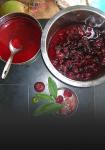When a banyan tree's branches hit the ground, they start acting as roots, too.
After a while, it is difficult to make out which is the tree's main source of nutrition -- the original roots, or the branch-turned-roots. It is a particularly apt analogy for Dabur India, and not just because a banyan tree has been the logo of the company for since its inception.
In Dabur's case, though, the banyan tree stands for what has not been achieved. The company has been branching out -- it has seven brands in the oral care category, nine in the hair care space and six brands in foods.
In fact, the Rs 1,852-crore (Rs 18.52 billion) company has a presence in categories ranging from mosquito repellents and juices to face packs and honey, some acquired and some developed in-house. Trouble is, not one of these categories contributes more than 21 per cent to the company's revenues.
Still, Dabur has been growing at a lively 17 per cent over the past three years. Which raises an interesting strategy question: is there a right way to grow? What is better: a few power brands that are nurtured to offer huge returns, or a wide array of products all of which contribute meagre sums that, nevertheless, add up to a reasonably good total?
There is a school of thought that believes Dabur's choice may not be the best way of ensuring future growth: too many segments will constrain it from scaling up significantly to match increasing competition and that will bring down overall pace of growth. Hear some analysts on the subject.
"It is probably better for a company to create a few champion brands rather than dissipate its energies on too many products, because that is what will result in sustainable margins," says Manish Saigal, associate director, KPMG.
Adds Ritesh Chandra, associate director, Ernst & Young, "It is difficult to scale up organically these days because brands are constantly being upstaged. Now, if companies don't scale up, margins are going to be under pressure."
"Not true," says Dabur India CEO Sunil Duggal dismissively. "We do have several categories but we don't believe our portfolio is unwieldy or too complex."
That view is seconded by V Sitaram, executive director, consumer care division. "What works for Hindustan Lever doesn't necessarily work for us. Our strategy is based not on the size of the individual products, but on the size of the brands. We are using our two master brands -- Dabur and Vatika -- to grow categories, rather than single products."
A finger in many pies
Dabur isn't the category leader in any of the consumer product categories where it has a presence: it is No. 4 in shampoos, No. 3 in toothpastes and nowhere in the reckoning in toilet soaps. But that doesn't appear to bother the company overmuch -- it is too busy launching new products.
In the past two years, there have been five launches under the Dabur umbrella and two under Vatika. And that doesn't include the eight brands the company gained when it acquired Balsara in 2005.
Duggal is clear about Dabur's direction: "We want to be in as many categories as possible, as long as they offer a herbal platform, even if our share is small."
Small is right. Consider toothpaste, for instance. In the Rs 2,500-crore (Rs 25 billion) segment, Dabur's share across four brands -- Babool, Promise, Meswak and Dabur Red -- is just 8 per cent, accounting for Rs 200 crore (Rs 2 billion).
Compare that with market leader Colgate, which commands close to 48 per cent of the market. But then, being No.1 is nowhere in Dabur's gameplan.
Sitaram explains that the strategy for a new brand launch is simple: by the third year, a new brand must contribute to common overheads and by the fifth year, it should make "some profit". "I don't intend to be the market leader. It's enough that I'm growing faster than the market," he adds.
The company is now aiming for 15 per cent of the overall market, depending largely on the growth in Dabur Babool (acquired from Balsara and subsequently renamed). Dabur claims the addition of the prefix has helped the brand grow nine percentage points to claim 21 per cent of the economy segment. Other brands, though, may not be so lucky.
Says an analyst, "Given the current size of the market and the number of products from whiteners to fresheners and gum, it may be an uphill task for brands like Meswak, which caters to the premium user and is worth around Rs 15 crore (Rs 150 million), to make significant inroads."
His advice? The company should discard products where volumes aren't growing fast enough to deliver margins. Dabur isn't ready to be quite so brutal with Meswak (also inherited from Balsara), but the company is working on new ways to rejuvenate and promote the brand.
Ironically, the company is far more focused in the Rs 2,200-crore (Rs 22 billion) shampoo segment, where it has a meagre 5 per cent share: the combined turnover of its 10-year-old brand Vatika and its three variants is around Rs 120 crore (Rs 1.20 billion).
Three years ago, the company launched a budget shampoo Anmol. The brand never took off and is now languishing on the verge of withdrawal.
"Anmol didn't succeed because it didn't have a differentiator," concedes Sitaram. Dabur now doesn't plan to launch a new shampoo brand any time soon. Instead, the company will concentrate on pushing sales of its Re 1 sachets, which are driving its shampoo sales at present. "We can double our share in this category," declares Sitaram.
Analysts are sceptical, though. "Competition from larger players such as Hindustan Lever (HLL) and Procter & Gamble is increasing," says Nikhil Vora, vice president, SSKI Securities. "It will not be easy for Dabur to grow its share, even though the category is underpenetrated."
Market watchers believe Dabur's brands are too small to effectively withstand competitive pressure -- shampoos account for just 4 per cent of the consolidated revenues of the company and Vatika is just a Rs 100-crore (Rs 1 billion) brand. Dabur argues that that it doesn't need the scale of an HLL simply because none of its brands is that big.
But that's precisely the worry, say analysts, especially given the growth in modern trade: unless a single brand is worth at least, say, Rs 150 crore (Rs 1.50 billion), it won't be able to negotiate effectively with large retailers, which means taking a hit on margins.
"If brands aren't big, margins can't be sustained," agrees KPMG's Saigal.
Scale: an uphill climb
Of course, it's not going to be easy to gain share in fiercely fought categories. Even traditionally higher-margin categories, such as foods, are now likely to be under threat as large retailers launch their private label products. (Dabur's foods business, with four brands, contributes 11 per cent to revenues, at present.)
It will be worse in categories like personal wash. The category is estimated to be worth Rs 5,500 crore (Rs 5 billion), but with more than a dozen players, scaling up for any single brand is difficult. Dabur is a minuscule player in this segment -- its Vatika brand toilet soap is worth barely Rs 25 crore (Rs 250 million), although the company hopes to grow it to Rs 100 crore.
Says Sitaram, "We are not looking for economies of scale. This is simply an extension of the Vatika brand and we should make money." That may be easier said than done, point out analysts. Look at Godrej No.1: it is the fourth-largest brand in the industry, but barely breaks even, according to executives at Godrej Consumer Products.
One way of scaling up could be through the inorganic route. That's an option Dabur hasn't ruled out: it has built up a war chest of $200 million for potential acquisitions both at home and overseas. But that strategy, too, comes with its own challenges. For one, there aren't too many brands to be had at home where valuations are reasonable. Besides, as Saigal points out, "There is always the risk that it could end up saddled with more brands."
Dabur is working around that by clinging to the herbal platform it adopted several years ago. "We are consciously entering only those categories that offer a platform for herbal products. That is why we have forayed into personal wash but will stay away from laundry," says Duggal.
Clearly, though, there is some flexibility in that approach: with the Balsara acquisition, Dabur acquired home care brands like Odopic and Sanifresh, which it retained since they were profitable brands.
Leveraging the brand
Within the herbal platform, Dabur is trying to do is capitalise on the strength of its two flagship brands, Dabur and Vatika. There is a clear advantage in using the brands across categories: advertising costs are substantially reduced, since there is no need to go in for fresh brand building.
Vatika, for instance, is now used for hair oil, shampoos, skin care and also personal wash. "The Vatika brand equity rubs off on all the products," points out Duggal.
There's a flipside, though. Indiscriminate use of the brand across price points may dilute the brand equity. Returning to the Vatika example, the brand is a premium product in hair oil, a top-end product in shampoo, but a mid-level priced soap.
Dabur, too, is present across the spectrum in over a dozen products -- from premium chyawanprash and honey to low-end toothpowder, addressing very different consumer groups. Dabur, of course, says it is careful not to over-stretch its brands.
Adds Sitaram, "Consumers seem to have no issues with the same brand being used across different price points." That may be so. But Dabur has only two successful brands and if it is hoping to be anywhere near a Rs 5,000-crore (Rs 50 billion) company in the near future, it can't afford to take any chances.








 © 2025
© 2025